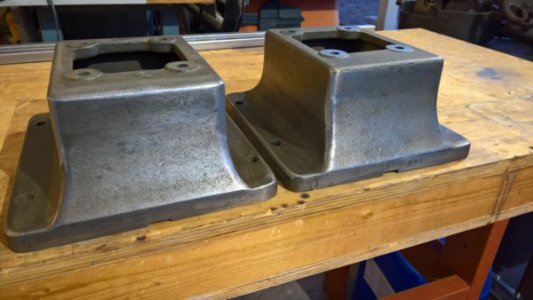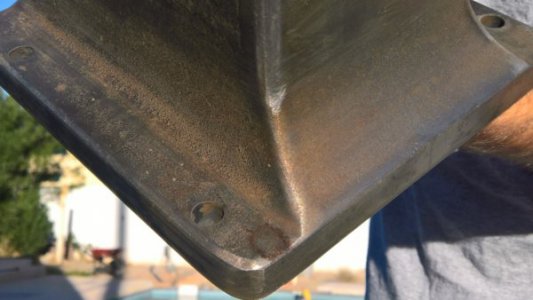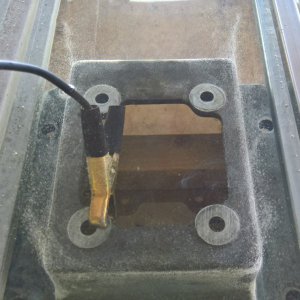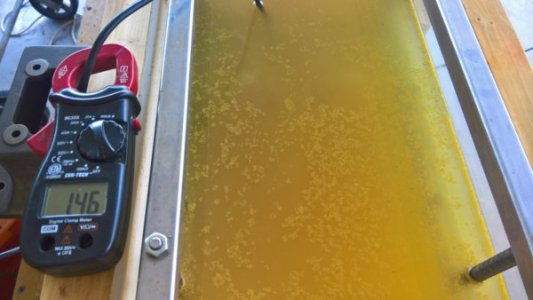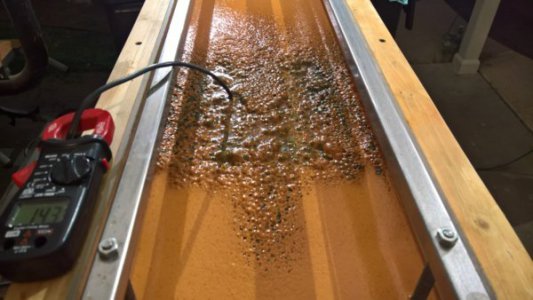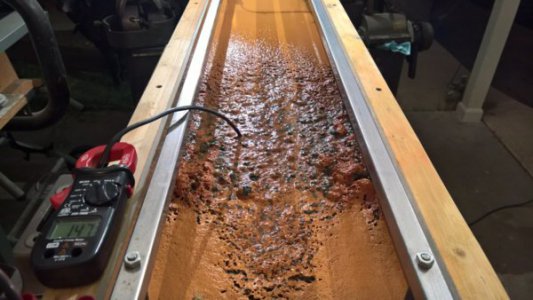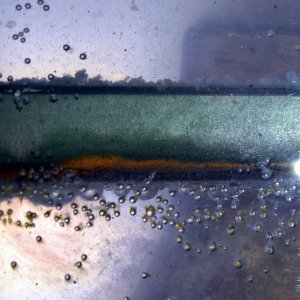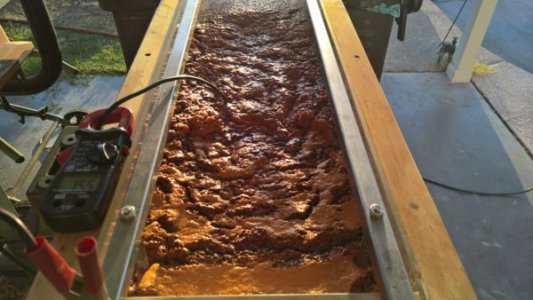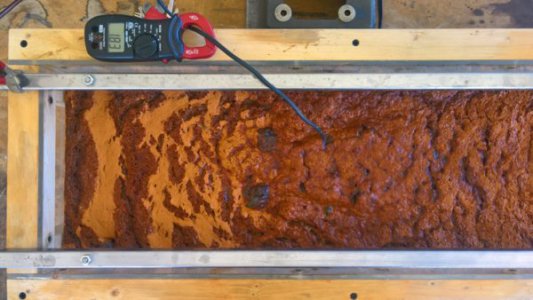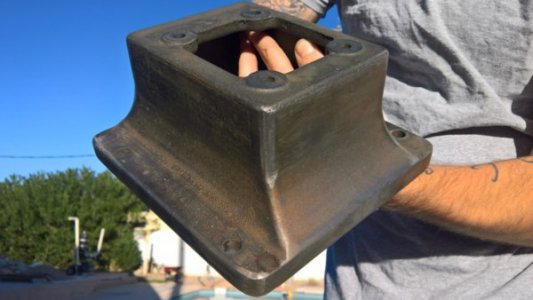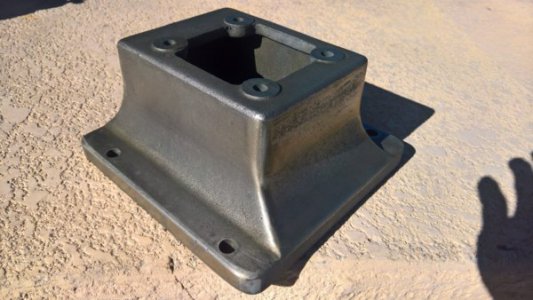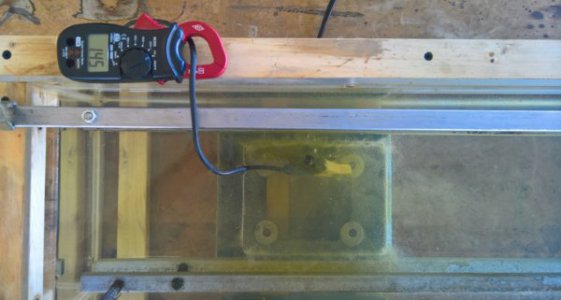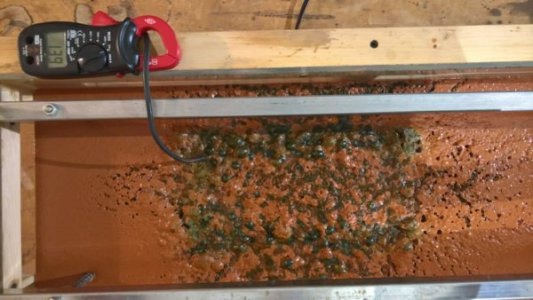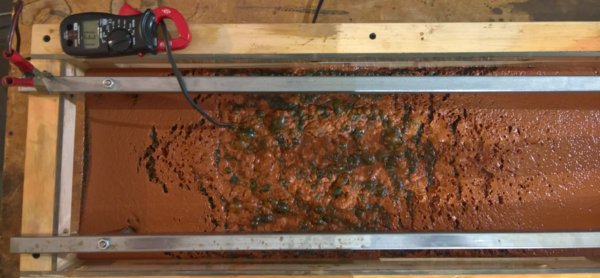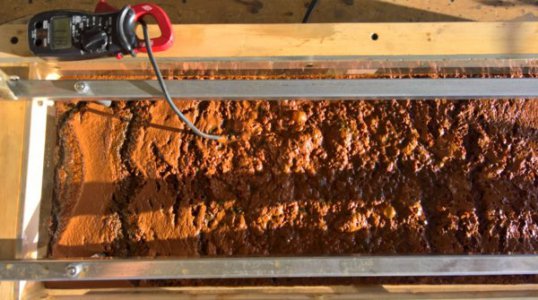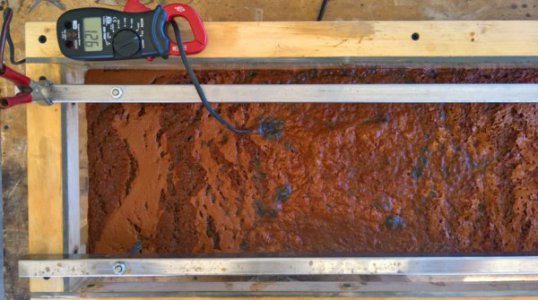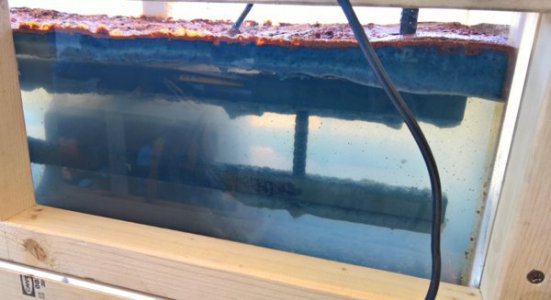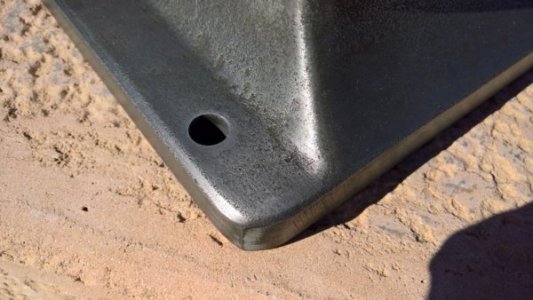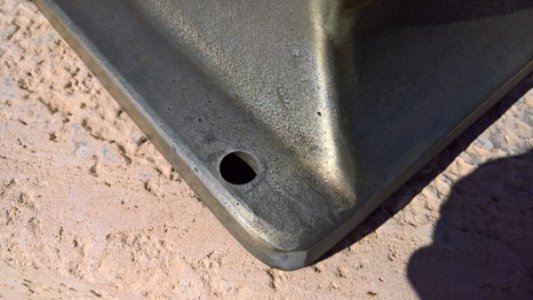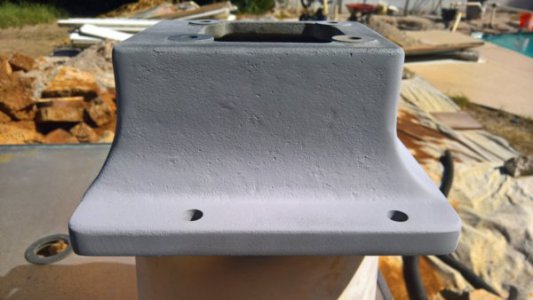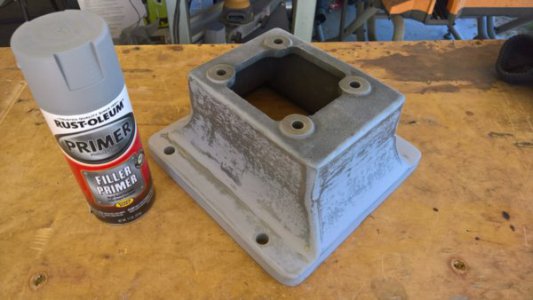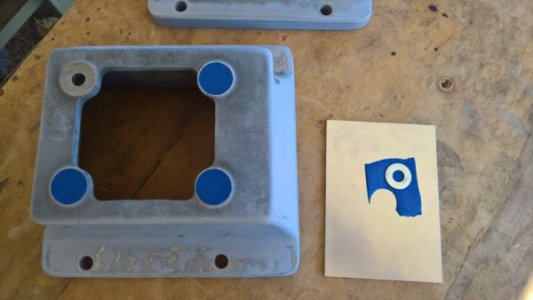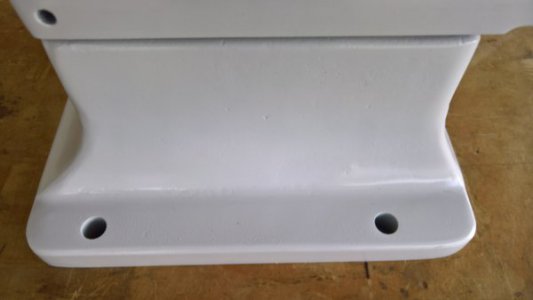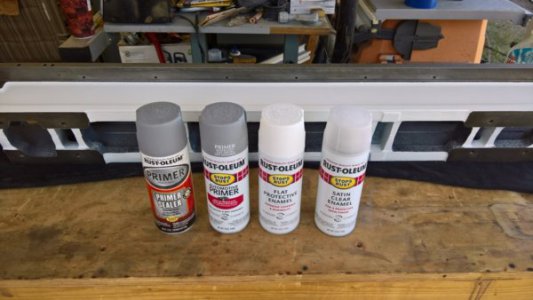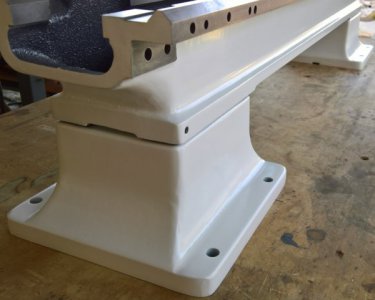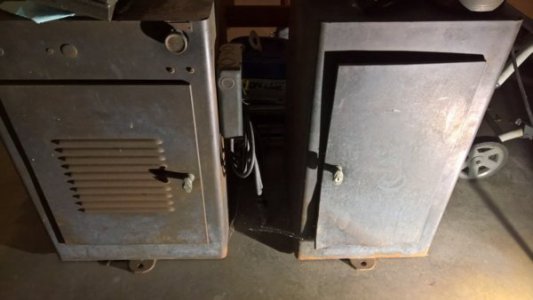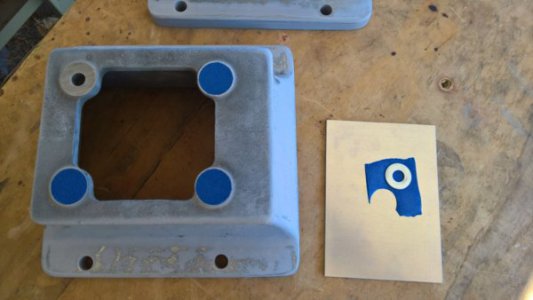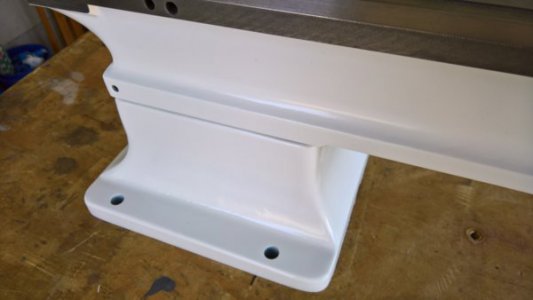- Joined
- Jul 30, 2017
- Messages
- 635
I got the bed completed.. The new spray guns worked out just ok with the PGP oil paint. The paint was a 2500 fast dry deep base, the Orifice was to small 1.0 on the detail gun for the viscosity of paint - that however worked really well for the Dark Gray because I needed it to be slow and accurate. But for the white I had to switch to the big gun for the second coat which was to slow - but a little faster with the 1.4 orifice, knew I should have gone with the 1.8 oh well.
I also switched and used the hi gloss white, because when I read the directions for the low sheen paint, It stated dry to touch after 4 hours and additional coats after 24 hours, I am doing this out doors so I had to pass on it.
The supports need more work before they are ready for paint, so I just did the bed today. There is orange peel - but it helps hide some of the imperfections in the bed. The paint job came out pretty Ok but ill use the 1.8 on the supports and see how that goes... If it goes well Ill give it a thumbs up using these guns with this paint, If not then Ill buy a hand held airless to do the pedestals and chip tray.
I did not do the testing I would normally do with a new paint elixir I'm not familiar with.. I just got very lucky the paint was forgiving - I did ask the paint people at PGP if there would be an Issue using a 1.0 orifice detail gun, they told me it would be slow but should be ok, The flow knob was wide open air at 25 Psi - there was no sputter or spiting and was going on even, but it felt more like air brushing then painting.
I inspected it after a couple hrs of drying, Its smooth all around with no dull dry looking spots so If it passed the fingernail test Friday I think we're golden.
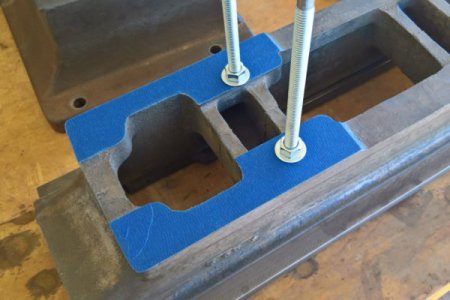
For those wondering how I got a nice crisp paint line between the Dark Grey and White without taping, thats the reason for the 10" long bolts, They stand atop saw horse's without any obstruction to the ground so there is no blow back of the paint to contaminate the previous color. as long as your not putting it on so thick that it runs this will be the natural result.
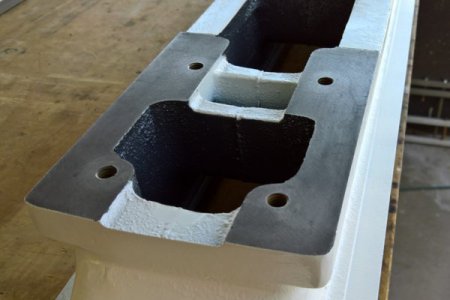
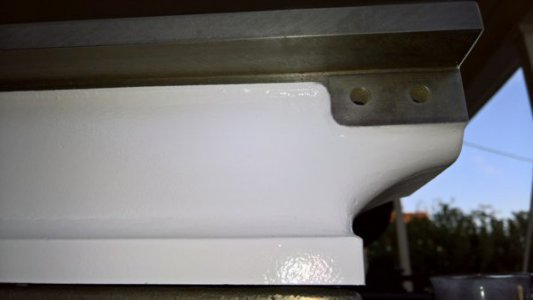
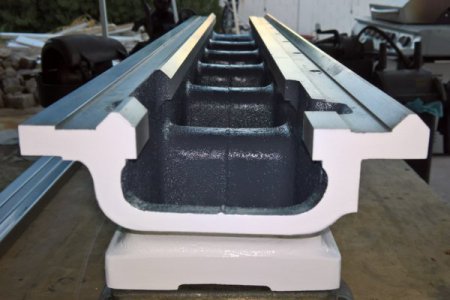

I also switched and used the hi gloss white, because when I read the directions for the low sheen paint, It stated dry to touch after 4 hours and additional coats after 24 hours, I am doing this out doors so I had to pass on it.
The supports need more work before they are ready for paint, so I just did the bed today. There is orange peel - but it helps hide some of the imperfections in the bed. The paint job came out pretty Ok but ill use the 1.8 on the supports and see how that goes... If it goes well Ill give it a thumbs up using these guns with this paint, If not then Ill buy a hand held airless to do the pedestals and chip tray.
I did not do the testing I would normally do with a new paint elixir I'm not familiar with.. I just got very lucky the paint was forgiving - I did ask the paint people at PGP if there would be an Issue using a 1.0 orifice detail gun, they told me it would be slow but should be ok, The flow knob was wide open air at 25 Psi - there was no sputter or spiting and was going on even, but it felt more like air brushing then painting.
I inspected it after a couple hrs of drying, Its smooth all around with no dull dry looking spots so If it passed the fingernail test Friday I think we're golden.

For those wondering how I got a nice crisp paint line between the Dark Grey and White without taping, thats the reason for the 10" long bolts, They stand atop saw horse's without any obstruction to the ground so there is no blow back of the paint to contaminate the previous color. as long as your not putting it on so thick that it runs this will be the natural result.




Last edited:

